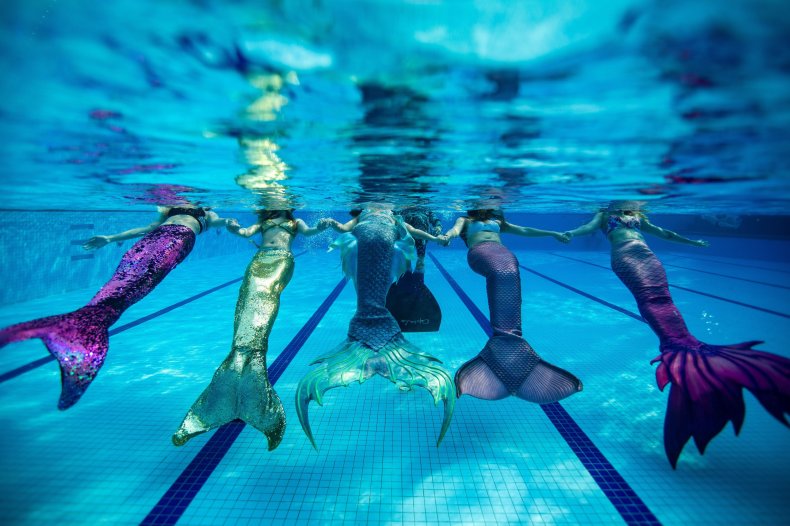Real-Life 'Eco Mermaid' Sets World Record for Farthest Swim Using Monofin
A Estonian swimmer, model, and entrepreneur recently completed a remarkable feat—all while looking just like a mermaid.
According to a Guinness World Records news release on Wednesday, Merle Liivand decided to spend her 30th birthday embarking on a 30-kilometer (18.6-mile) swim off the coast of Miami Beach, Florida. What made the swim unique, however, is the fact Liivand did not use her arms at all to propel her forward—instead, she swam only using only her legs and feet, which were bound in a mermaid-like tail fin called a monofin. With the arduous 9-hour, 19-minute journey, Liivan set a new Guinness World Record for farthest swim using a monofin.
Monofin swimming, and the broader category of finswimming (which also includes the use of bifins and other variations) is a highly competitive sport and training exercise. According to DeeperBlue.com, "the basic monofin design is a pair of foot pockets attached to a single blade." Swim England added that monofins are often used by "competitive swimmers, or those trying to improve their technique" in order to "increase their speed through the water."

Described by Guinness as an "eco mermaid," Liivand reportedly hopes her record-setting swim will raise awareness regarding the dangers of marine pollution.
"We looked at videos of how seals, dolphins, whales, sharks, or turtles will get stuck on fishing nets or plastic. They can't use their fins and they can't flip around and be happy animals," she explained. In her long-distance, open-water monofin swims, Liivand tries to emulate the experience of sea creatures caught in plastic waste—as Guinness notes, most aquatic animals have "no arms [and] just one tailfin."
Bolstering her message of sustainability, Guinness reported that Liivand did not wear anything made of plastic on her record-setting swim.
This latest swim, which took place in April 2021, is actually Liivand's third time setting the world record for farthest monofin swim. In 2019, she first set the record by swimming 10 km (6.2 miles) with a monofin in Redondo Beach, California. The next year, she followed it with a 20.6 km (12.8 miles) journey in Miami.
Liivand noted that monofin swimmers face an entirely different set of challenges compared to their traditional counterparts, especially because monofin swimming doesn't allow for the use of one's arms. "The technical aspect is really different than just being a professional swimmer," she said.
She added: "Go for it and get it done; that was my main mental aspect on that day."
Newsweek has reached out to both Liivand and Guinness World Records for further comment.

